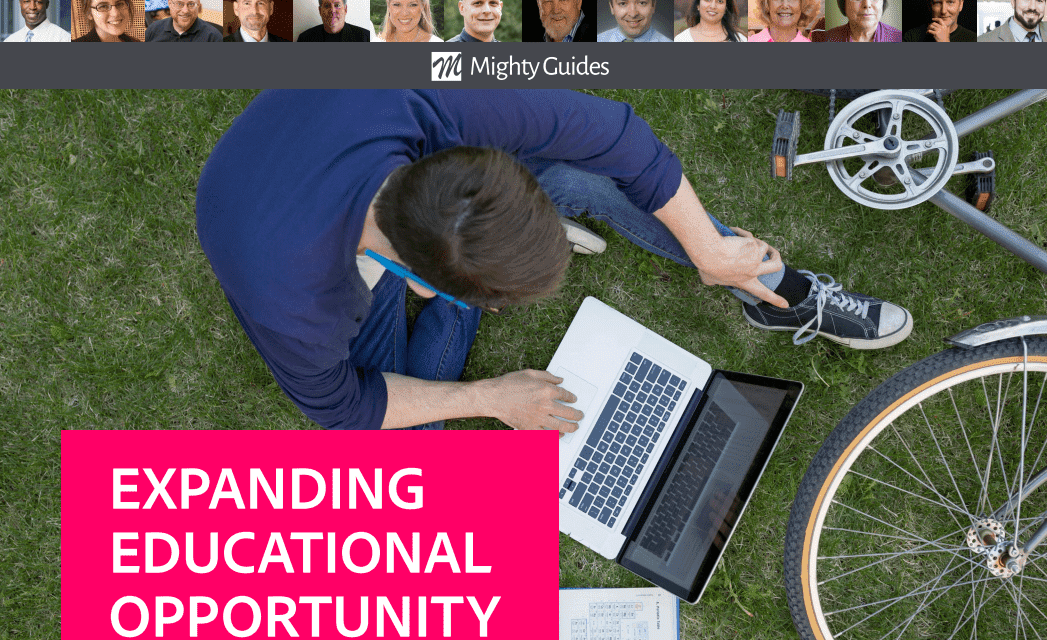The book includes insights from the following experts:
- Korey Singleton, George Mason University, Assistive Technology Initiative Manager, Well-Crafted Assistive Technology Often Delivers Benefits In Unexpected Ways >>
- Dave Bolman, University of Advancing Technology, Provost, Agile Principles In Educational Technology >>
- Kara Zirkle, Miami University, Accessible Technology Specialist, Accessibility Starts in Procurement >>
- Steven D’Agustino, Fordham University, Director of Online Learning, Office of the Provost, When Moving Education Online, Think Teaching, Not Tools >>
- Karen Rubinstein, Morgan State University, Director, Academic Technology Services, ADA Compliance Leads To Better Learning Design >>
- Keith Hoell, Briarcliffe College, Director of Online Education, Technology Training Increases Access To Education >>
- John Vivolo, New York University, Director of Online and Virtual Learning, Anytime, Anywhere Learning and the Value of Synchronicity >>
- Krista Greear, University of Washington, Assistant Director, Disability Resources, Content In Multiple Formats Provides The Greatest Access >>
- Ray Henderson, Lessons Learned Ventures, LLC., Founding Partner, Platform Accessibility – Milestones Reached, But A New Frontier >>
- Thomas Murray, Alliance for Excellent Education, Director of Innovation, Classroom Technology Should Facilitate Active Learning >>
- Joseph Montcalmo, Johns Hopkins University, Director, Academic Technology and Instructional Design, Innovative Online Education Improves Classroom Education >>
- Larry Johnson, EdFutures, Founder and CEO EdFutures, Scale Beyond Benchmarks to Achieve Success >>
- Michael Lampe, South Carolina Upstate, Instructional Design Specialist at University, Active Learning Classrooms Increase Student Engagement >>
- Monica Yatsyla, Hofstra University, Manager of Instructional Design Services, Empower Students With Disabilities Through Robotics >>
- Martha Kanter, NYU & College Promise Campaign, Executive Director, Tech Guides Pathways For Student Success >>
- Sheryl Burgstahler, Director of Accessible Technology Services, University of Washington, Apply Universal Design to Increase Accessibility >>
- Kevin Dalin, Tech4Impact, Consultant & Rehabilitation Technology Specialist, Open, Meaningful Conversations With Assistive Technologies >>
- Lauren Erardi, Quinnipiac University, Director of Academic Technology, How Lecture-Capture Technology Supports Student Learning >>
- Devrim Ozdemir, Des Moines University, Instructional Design Coordinator, Accessible Curriculum Begins With The Instructor But Requires A Team Effort >>
- Alan Greenberg, Wainhouse Research, Senior Analyst & Partner, Tap The Cloud To Expand Education For Everyone >>
Expanding Educational Opportunity was generously sponsored by Blackboard.
We’ve spoken with 20 educational leaders to learn more about how institutions tap technology to improve education and make it available for all students, including those with differing abilities. We asked them the following question:
Please share a specific story (or perspective) about how you or your institution used technology to provide greater access to students with specific needs (e.g., physical disability, location, or inability to get to campus.) What key piece of advice can you offer to someone else trying to implement your approach?
A generous partnership with Blackboard makes it possible for us to share with you experiences that institutions have had implementing these technologies, how they’ve worked to overcome problems, and the outcomes they’ve seen from those efforts.
These experts offer their perspectives on challenges, successes, and lessons learned. They discuss everything from design and development strategies to the changing role of higher education and educators. Most of these professionals agree that when you expand availability to education by using accessible technology, whether it is video captioning, text to speech, or more advanced technologies, even students who don’t identify as having disabilities use these services and that they increase student success rates and improve learning overall.
I trust you’ll find these experts’ successes and advice useful and that after reading this, you’ll have solid strategies to help advance your use of technology to broaden access to education for all students.



